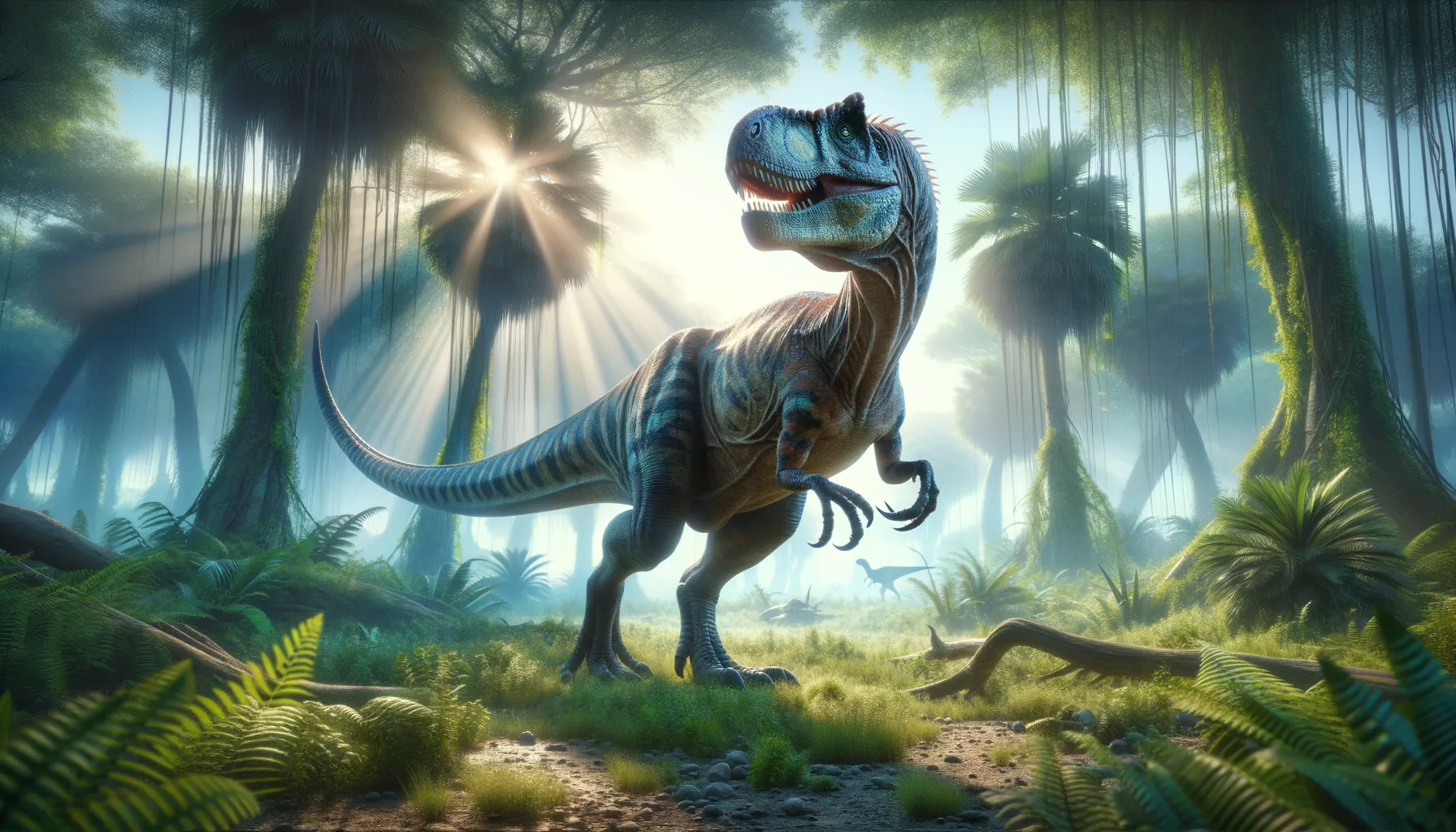
Fukuiraptor
Swift and sharp, a predator of the past!
Period
Cretaceous
Length
Measured about 4.2 meters long.
Height
Stood around 1.8 meters tall.
Weight
Approximately 590 kilograms.
Fukuiraptor was a medium-sized theropod dinosaur from the Cretaceous period. Found in Japan, it offers important insights into the diversity of predatory dinosaurs in Asia. This predator had sharp claws and teeth, helping it hunt small to medium-sized prey. Its discovery has shed light on the ancient ecosystems of what is now Japan, showing a wide range of dinosaur life in this region.
Diet
Fukuiraptor was carnivorous, preying on smaller dinosaurs and possibly scavenging for meat. Its sharp teeth and claws were well-suited for catching and tearing into flesh.
Hunting
Fukuiraptor likely used its speed and claws to hunt. It may have hunted in small groups to take down larger prey, using ambush tactics to surprise and overpower its targets.
Environmental challenges
During its time, Fukuiraptor faced various environmental challenges such as changes in climate and vegetation. Natural disasters like volcanic eruptions could have posed threats. Competition for food with other carnivores was also likely, forcing it to be an efficient hunter. Adaptations like sharp claws helped overcome these challenges.
Speed
Fukuiraptor was relatively swift for its size.
Lifespan
Lived for approximately 10 to 20 years.
First discovery
Discovered in the Fukui Prefecture, Japan in 1996.
Fun Facts
- Fukuiraptor means 'Fukui thief,' named after the Fukui Prefecture in Japan where it was discovered.
- This dinosaur lived about 127 to 115 million years ago during the Early Cretaceous period.
- Fukuiraptor was a medium-sized theropod, which means it was a carnivorous dinosaur that walked on two legs.
- It is estimated to have been about 4.2 meters (14 feet) long and weighed around 175 to 225 kilograms (386 to 496 pounds).
- Fossils of Fukuiraptor were first discovered in 1990 at the Kitadani Dinosaur Quarry in Japan.
- Fukuiraptor's teeth and claws suggest it was a predator, likely hunting smaller animals for food.
- Some scientists believe Fukuiraptor is closely related to other well-known theropods like Allosaurus and Neovenator.
Growth and Development
Fukuiraptor, like other theropods, hatched from eggs and grew rapidly to reach adulthood. Its bones reveal growth rings, indicating fast initial growth rates. Juveniles may have had to fend for themselves or stayed in groups for protection. Understanding its development provides insights into dinosaur life cycles.
Habitat
Fukuiraptor lived in what is now the Fukui Prefecture of Japan, a region that was likely rich in rivers and forests during the Cretaceous period. This habitat provided a variety of prey, including smaller dinosaurs and ancient mammals. Seasonal changes may have influenced its hunting and migration patterns.
Interaction with other species
Fukuiraptor coexisted with a variety of other species, competing with other predators for food. It may have scavenged on carcasses left by other larger predators. Its interactions likely included battling over territory with rivals or avoiding larger predators.
Natural lifespan
Its lifespan extended up to 20 years under natural conditions.
Reproduction
Fukuiraptor, like other dinosaurs, reproduced by laying eggs. It possibly built nests, either solitary or communal, to protect its offspring. Parental care, if any, remains uncertain but might have involved guarding eggs from predators.
Social behaviour
Fukuiraptor may have exhibited some social behavior, possibly hunting in packs or interacting with others while scavenging. Its social structure remains unclear, though some level of cooperation could have existed, especially during hunts.
Fossil locations
Fossils of Fukuiraptor have predominantly been found in the Katsuyama Dinosaur Quarry of Fukui Prefecture. This site has provided crucial insights into the Cretaceous ecosystem of Japan. Other potential fossil sites in Japan remain under exploration, promising further discoveries.
